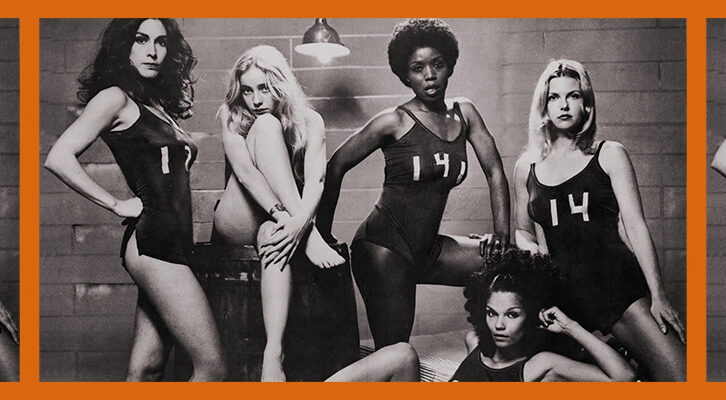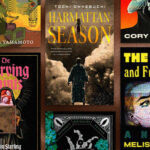
Love and Sustenance: Why Indian Mothers Obsess Over Feeding Our Kids
Yamini Pathak In Praise of Nourishment From Hand to Mouth, For Mothers and Children Alike
Ma mixed boiling dal with buttered rice
scooped with her fingers
taste of her skin
lilt of her tale
in my mouth
as she sang, bite after bite:
one for the village children
one for you
–“I Have Eaten Under Her Skies,” Her Mouth a Palace of Lamps
*
Growing up in India, I was hand-fed by my mother until I was six or seven years old. Sometimes, if she was busy, the task of feeding me would be delegated to Usha, our live-in domestic helper. Being fed this way, tasting my mother or Usha’s fingers mingled with the food still feels like the most primal act of care.
Most Indian food, except for liquid dals and curries, is enjoyed by eating it directly with the fingers. As someone who uses both her fingers and utensils to eat, I can attest to the sensuality of letting your fingers taste warmth and spice even before the food reaches your mouth. Eating with the hands can help you slow down and be more mindful about what you are putting into your mouth. According to Ayurveda, the traditional Indian system of medicine, eating with your hands is hygienic (after having washed your hands, of course) and beneficial to your senses and digestion. When we touch food with our fingers, Ayurveda suggests, we send signals to our brains that we are ready to eat, which activates our digestive organs.
In all the time I was struggling to nurture my babies, the key to understanding true nourishment lay in satisfying my own body.
I remember leaning into Usha’s lap as we sat on low stools in the kitchen, and she made balls of rice, dal, and vegetables to fit into my small mouth. The meal was accompanied by stories about her own children playing and working in the fields of her village. Children she had left behind to earn money that she mailed back home every month. I chewed, riveted by her winding tales of tigers in the forests surrounding her village, told against the background sounds of pigeons roosting in the rafters. To this day, the cooing and mutter of pigeons can lull me into a space of deep enjoyment.
*
We were convinced our table manners were savage.
We sat crisscrossed
anyhow
on the floor,
families loud, children opening
their mouths to a loving
invasion
rice grains pinched in the beaks
of their mothers’ fingers
The trickle of juices warming the purse
of our palms before they touched
our tongues.
–“Pakad,” Her Mouth a Palace of Lamps
*
Parents mark all sorts of baby milestones—first word, first step, first tooth. One of the milestones marked indelibly in my mind is the first birthday party my toddler son attended at the home of one of his three-year-old preschool classmates.
All went well until it came time to eat. Every child picked up their own fork and started to stash mac and cheese into their mouth, more than half of it ending up on the floor. The hostess seemed to accept this quite cheerfully and, in fact, expect the mess. Only my son stared at his food without making a move towards it, then turned expectant eyes on me while he waited for me to put food into his mouth.
What’s wrong? asked another mom. Doesn’t he like pasta?
Oh no, he loves it, I said, suddenly embarrassed.
I realized I was the only mom feeding her child in that room. The other moms, most of them white, said nothing, but I could feel their silent judgment. I was overwhelmed with doubt. Was I stunting my child’s development and ability to take care of himself? Was I making him overly dependent on his parents for something as basic as eating?
Why are Indian parents always so concerned with feeding their children? A teacher at my children’s Montessori preschool once asked me.
It is certainly true that food is the love language of most Indians, especially parents. In India (and from what I hear, many Asian countries) preparing and offering food is a primary way to express love and affection for another person—whether they are partner, child, relative, or friend. When you visit an Indian friend, you can expect at the very minimum to be handed a cup of tea and a plate of cookies or some deliciously unhealthy and crunchy snack. When a friend tells me they are dropping by, my mind immediately starts to race and run through a list of food options that I can serve them.
During my high school years, especially during exams, my mom was always barging into my room with bowls of cut fruit or slices of cucumber because she claimed my brain would “work better” if I kept it nourished.
While parenting in America without sustained family support, I learned from various forums on the internet that the focus is on making your child independent and capable of survival when they leave the nest. In contrast, parenting in India stresses making the child aware of the interdependence of family members. Just as parents care for children in their infancy, children are expected to care for their aging parents when they grow up. All of this is, of course, overly simplified and in a constant state of change as the world continues to shrink and societies influence each other through various media and migrations.
*
I dislike grocery shopping. In India,
this makes me a mother who doesn’t care
to feed her children.
–“Mirch Masala,” Her Mouth a Palace of Lamps
*
As a young immigrant parent in America straddling two such divergent approaches, I don’t think I ever completely resolved the feeding dilemma. My mother, of course, insisted I feed the kids myself when I discussed it with her over the phone. She thought the children would starve if I handed over the control of spoon and fork to them. In those busy days of bringing up two young children without family support or outside help, I took the path of least resistance. I found that my kids would eat with less fuss if I hand-fed them, so that was what I did. If either of them had insisted on eating independently, I probably would have been thankful to relinquish the task to them.
Every time I put a spoonful of food into one of my babies’ mouths, my mouth opened unconsciously…as though my own body was being sustained with every mouthful they swallowed.
I have spent years feeling like cooking is a chore and found the kitchen to be a space of stress. Much of that stress arose from the knowledge that I could never match up to my mother’s gifts—neither her ability to cook delicious meals nor the efficiency and economy of her hands during the process of making. I bumbled my way through the kitchen feeling like a poor facsimile of her, but I got the job done.
*
For years, my mother was the map of the world.
Now I ask my body where it wants to go, where
it will feel safe.
–“The Skin Finds Its Way Home,” Her Mouth a Palace of Lamps
*
Now that I am older, I have reached a point where I am no longer a harsh critic of my abilities in the kitchen. Instead, I applaud myself for showing up day after day with a commitment to my children’s physical and psychic health even when I would rather have spent that time reading or writing. Over time I have come to realize that the manual act of preparing food acquires an energy that nourishes both maker and consumer. Perhaps surprisingly, I owe this self-appreciation to my own menopausal body when I discovered that I feel the most healthy, satisfied, and alive when I eat home-cooked food. In all the time I was struggling to nurture my babies, the key to understanding true nourishment lay in satisfying my own body. When I mentioned this to my mom, all she had to say was, “Of course! I always ate before I fed you kids.” She had always followed the simplest rule of caregiving, a wisdom that took decades for my body to absorb and learn: she took care of herself first.
My kids are teens now and don’t need help feeding themselves. For the most part, I am relieved to be free from this responsibility. Or as free as any Indian mother can be. I still find myself cutting fruit and leaving it on the kitchen counter for after-school snacks. As my husband once laughingly pointed out to me—every time I put a spoonful of food into one of my babies’ mouths, my mouth opened unconsciously, as though I was taking a ghost-bite for every bite they ate, as though my own body was being sustained with every mouthful they swallowed.
__________________________________

Her Mouth a Palace of Lamps by Yamini Pathak is available from Milk & Cake Press.
Yamini Pathak
Yamini Pathak is the author of poetry collection Her Mouth a Palace of Lamps (Milk & Cake Press, 2025) and chapbooks Atlas of Lost Places (Milk & Cake Press, 2020) and Breath Fire Water Song (Ghost City Press, 2021). She is a member of the 2025 Poets & Writers' Get the Word Out Poetry Cohort and serves as the editor of Inch with Bull City Press. A recipient of an Individual Artist Fellowship from the New Jersey State Council on the Arts, her work has been supported by Vermont Studio Center, Tin House, Kenyon Review Writers Workshops, and VONA. She has been nominated for Best New Poets and has been a finalist for Frontier Poetry’s Global Poetry Prize (South Asia). Yamini holds an MFA in poetry from Antioch University, LA, and her poems appear in West Branch, Poetry Northwest, Tupelo Quarterly, among other journals.



















